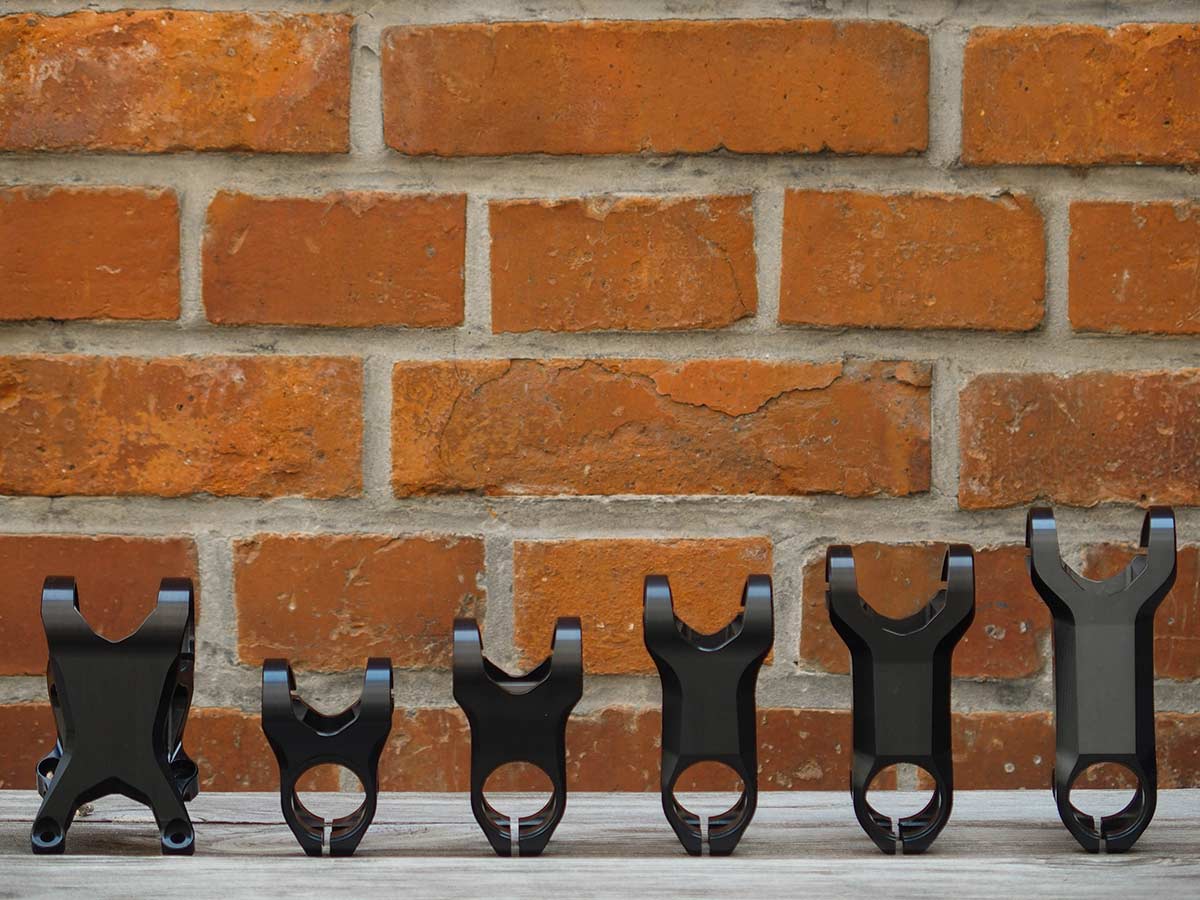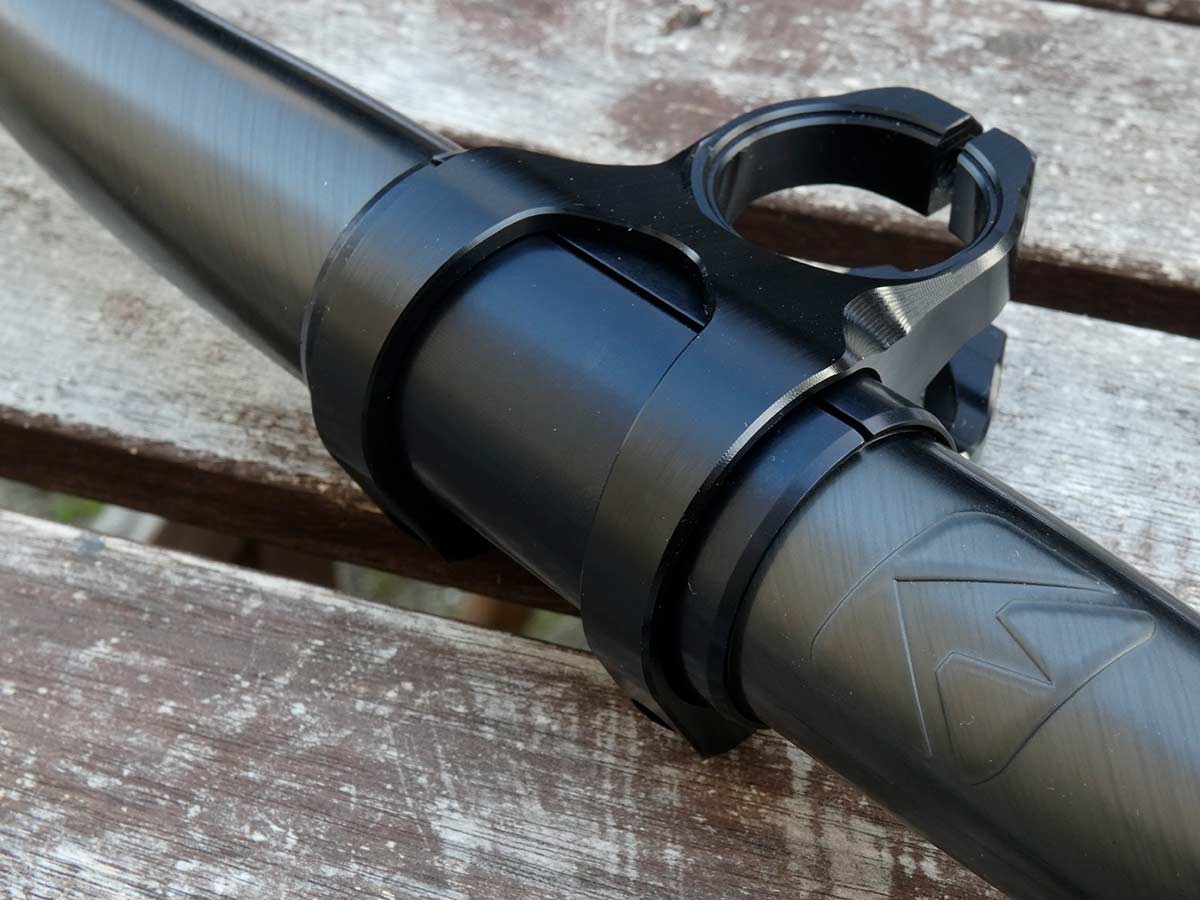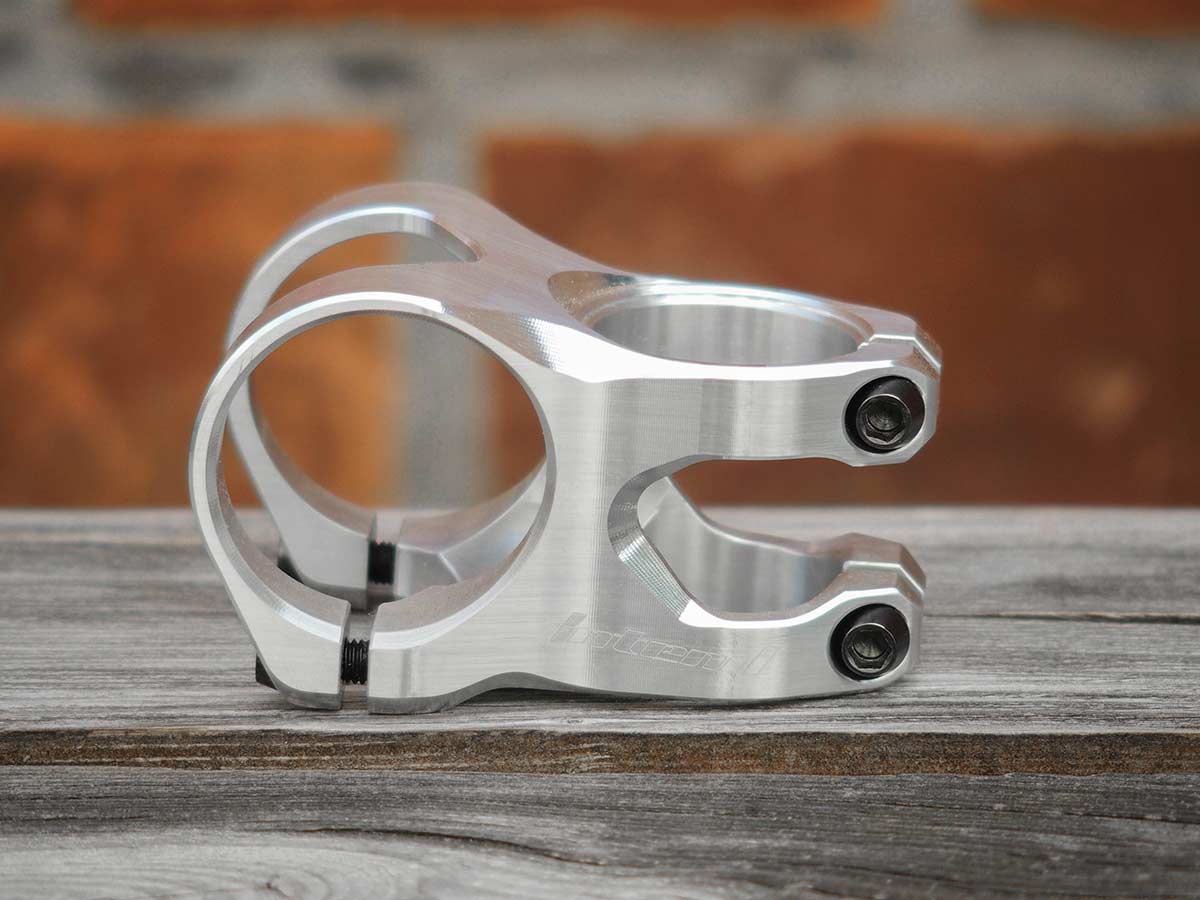Cornelius Kapfinger of Intend Bicycle Components has revamped his lineup of Intend Grace Stems, adding a new “Freeride” stem in the process. Another new stem, so what? These are different. They don’t conform to the traditional two-piece four-bolt face-plate stem design. The Intend Grace Stems are composed of a single piece of CNC’d aluminium, with two bolts clamping at the steerer, and two bolts clamping at the bar. The handlebar simply slides through the stem into place. Intend say this design is the best technical solution for fixing two cylindrical tubes to one another.
Intend Grace Stems
Why change a tried and tested design, you say? Well, the basic concept of the Intend Grace stems isn’t entirely original. Cornelius says that the design was in use 20 years ago, but became impractical with the growing trend for riser bars, which brings me to my next point.
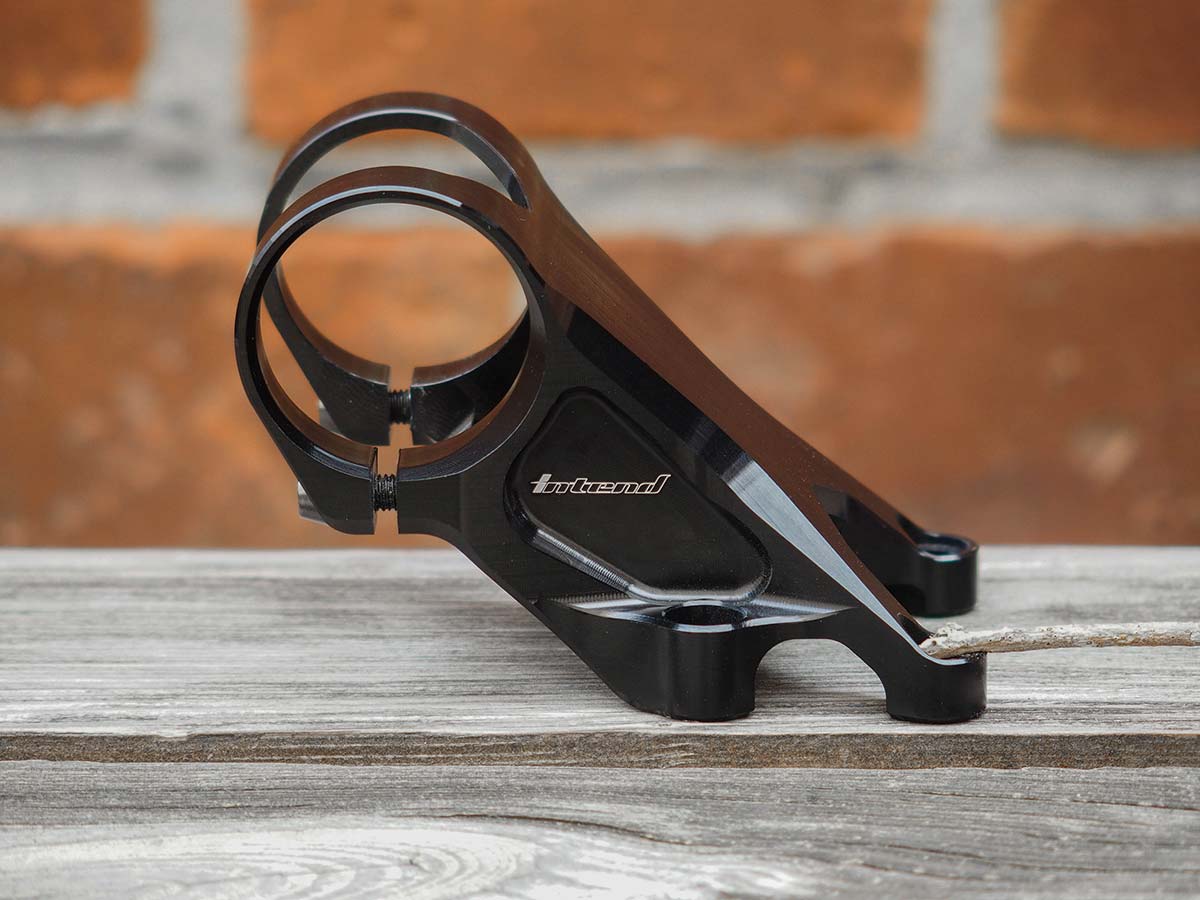
The Intend Grace Stems have limited handlebar compatibility with respect to the rise parameter, for the simple reason that the bend prevents you from fitting them. Cornelius simply wanted to produce a stem that “stands out due to its different nature and thus exerts a charm”. He argues that the incompatibility with certain riser bars is becoming less relevant with the increased popularity of 29ers with their taller front ends. A rise of 20mm-25mm is the compatibility limit for most handlebars. That said, the stems can take a maximum rise of 10mm for certain bars such as Renthal Carbon and Hope bars.
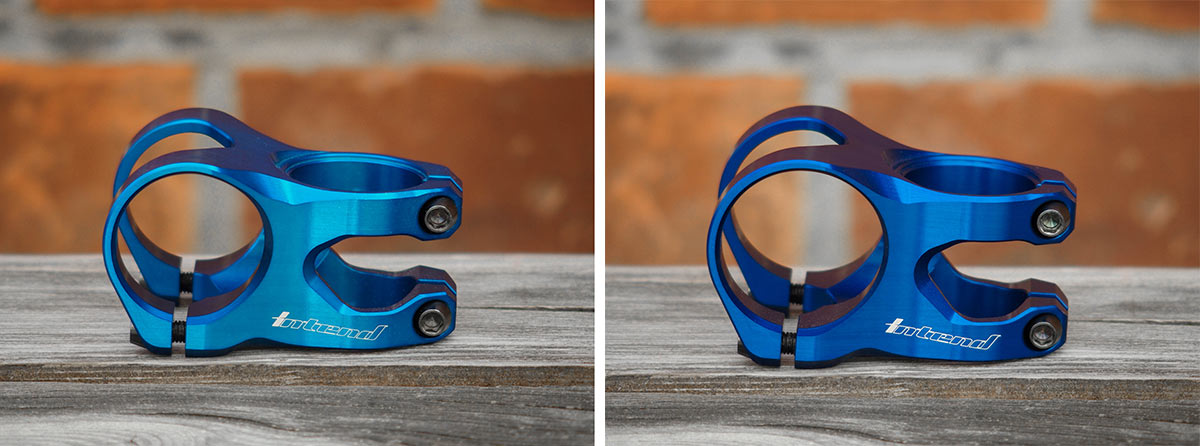
The guy certainly achieved what he set out to. The Intend Grace Stems are very nice to look at, as stems go. The design bestows a clean finish upon the cockpit, with fewer bolts and gaps to look at. It’s simple, neat, and the chamfered edges look good too. Throughout the lineup, from DH to Cyclocross, the size of the chamfer increases in proportion with the length of the stem. The bar clamp edges are also rounded off, meant to be better for carbon handlebars.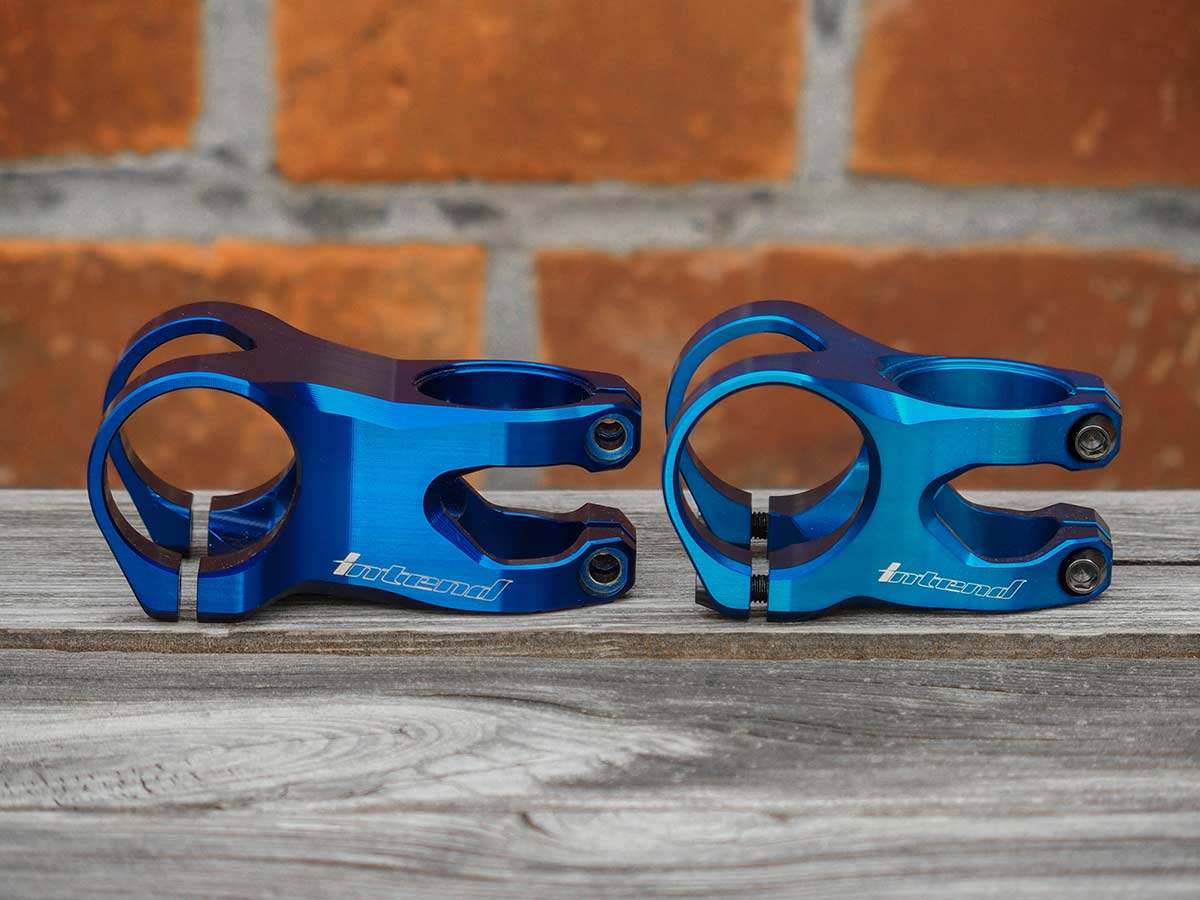
Left: Intend Grace EN; Right: Intend Grace FR. Intend say the blue anodization is variable as it cannot be tightly controlled.Due to a lack of clarity around the nomenclature of the Intend Grace lineup and each stem’s intended use, Cornelius has reshuffled the range. The previously named Intend Grace Trail Stem, with a 50mm reach, has been renamed the Grace EN. This is to make it clear that the stem is strong enough to handle gravity mountain biking loads, as it passes the gravity test standard at the EFBE test laboratory. The new Grace Trail stem is longer, with a reach of 65mm.
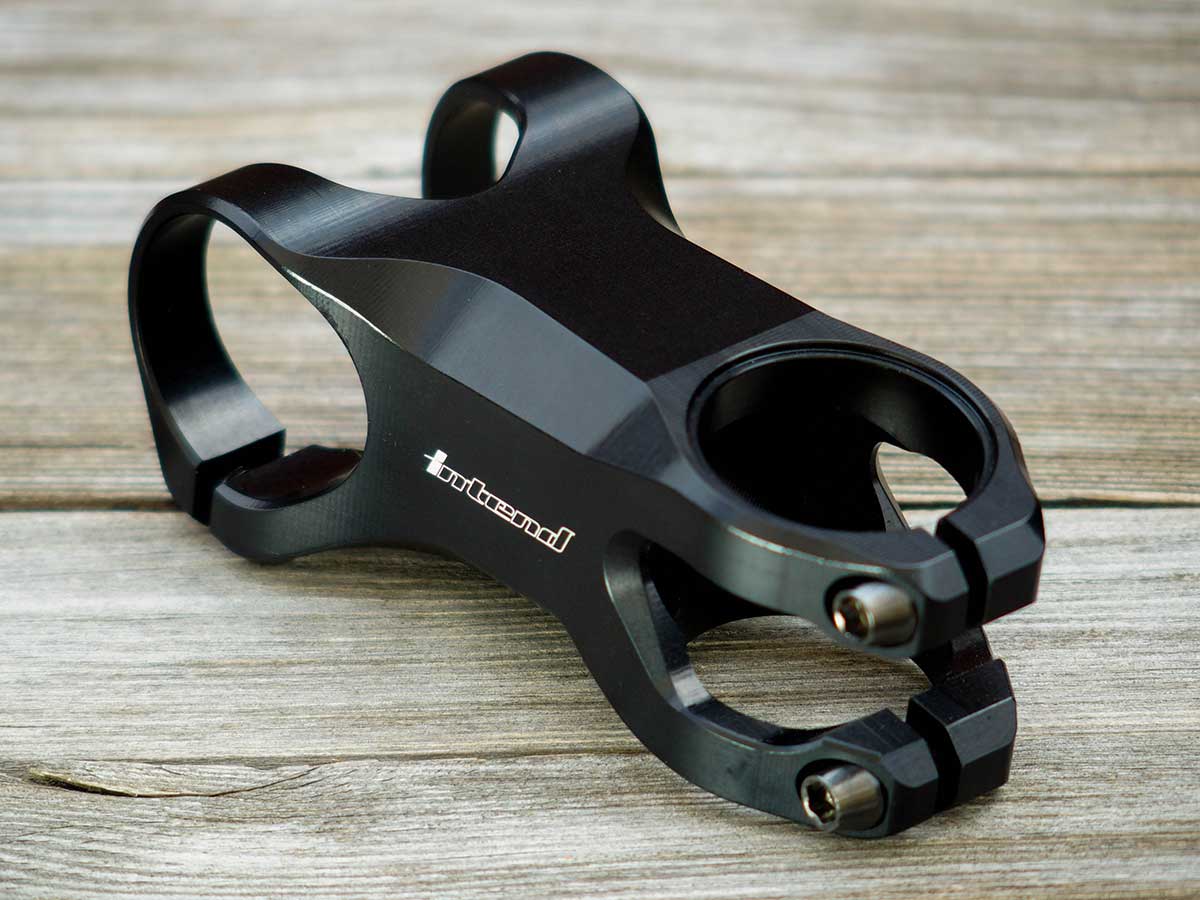
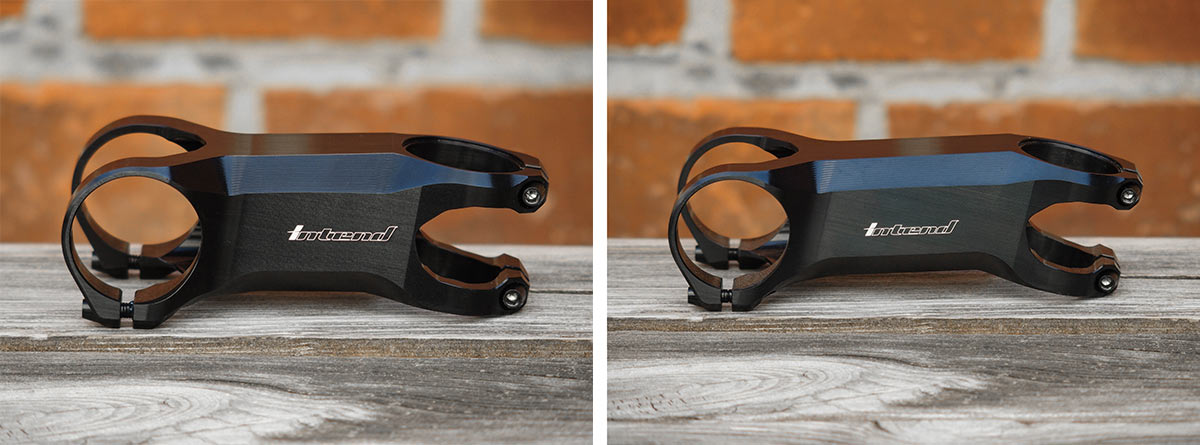
The Intend Grace XC and CC models remain unchanged, with reaches of 77mm and 90mm, respectively. These stems, designed for disciplines where climbing performance is of greater import, are angled downwards with respect to the steerer. The XC stem has a drop of -7°. The CC stem drops at an angle of -12°. This is in contrast to the more gravity-focused stems which are angled upwards, placing the bar higher than the steerer clamp area.
Intend also make a handlebar clamp adapter. It is essentially a sleeve that reduces the diameter of the stem clamp region from 35mm to 31.8mm to allow you to mount the narrower bar. This will be necessary if you want to run a 31.8mm bar with the Intend Grace DH stem which is only available in a 35mm clamp version. The adapter is carbon handlebar compatible and will set you back €24.
Pricing & Availability
All Intend Grace stems are made in Germany, including the black-coated grade 5 titanium bolts. All are available now, in black, raw and blue, direct from Intend.
| Intend Stem | Reach (mm) | Clamp Size Options (mm) | Claimed Weight | Price |
| Grace DH | 60 | 35 | 113g | € 169 |
| Grace FR | 35 | 35 & 31.8 | 80g | € 149 |
| Grace EN | 50 | 35 & 31.8 | 88g | € 159 |
| Grace Trail | 65 | 31.8 | 95g | € 169 |
| Grace XC | 77 | 31.8 | 79g | € 179 |
| Grace CC | 90 | 31.8 | 87g | € 189 |
